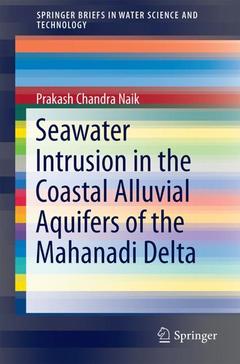Seawater Intrusion in the Coastal Alluvial Aquifers of the Mahanadi Delta, 1st ed. 2018 SpringerBriefs in Water Science and Technology Series
Auteur : Naik Prakash Chandra

This book aims to clarify the issue of groundwater in coastal saline environment management. It serves as a reference to scientists, engineers, and decision makers who might use it to improve resource management practice and cooperation in the delta region. It specifically covers the nature and extent of the aquifers in the coastal saline tract of Mahanadi Delta, India. The book scientifically delineates and classifies the aquifers, illustrates the geology, hydrogeology, geomorphology, geophysics, geometry, and water quality of the different aquifers, and explores the nature and extent of seawater intrusion in the different aquifer systems.
Provides a valuable reference to scientists, engineers and decision makers for better understanding of groundwater in the coastal saline environment
Contributes a new dimension in the understanding of the saline fresh water relationship in coastal aquifers
Leads to better resource management practice in the delta region with adequate protective and corrective measures
Contains a large amount of unpublished sub-surface data and illustrations
Includes a large amount of figures giving a clear picture of the groundwater regime
Includes supplementary material: sn.pub/extras
Date de parution : 09-2017
Ouvrage de 112 p.
15.5x23.5 cm



